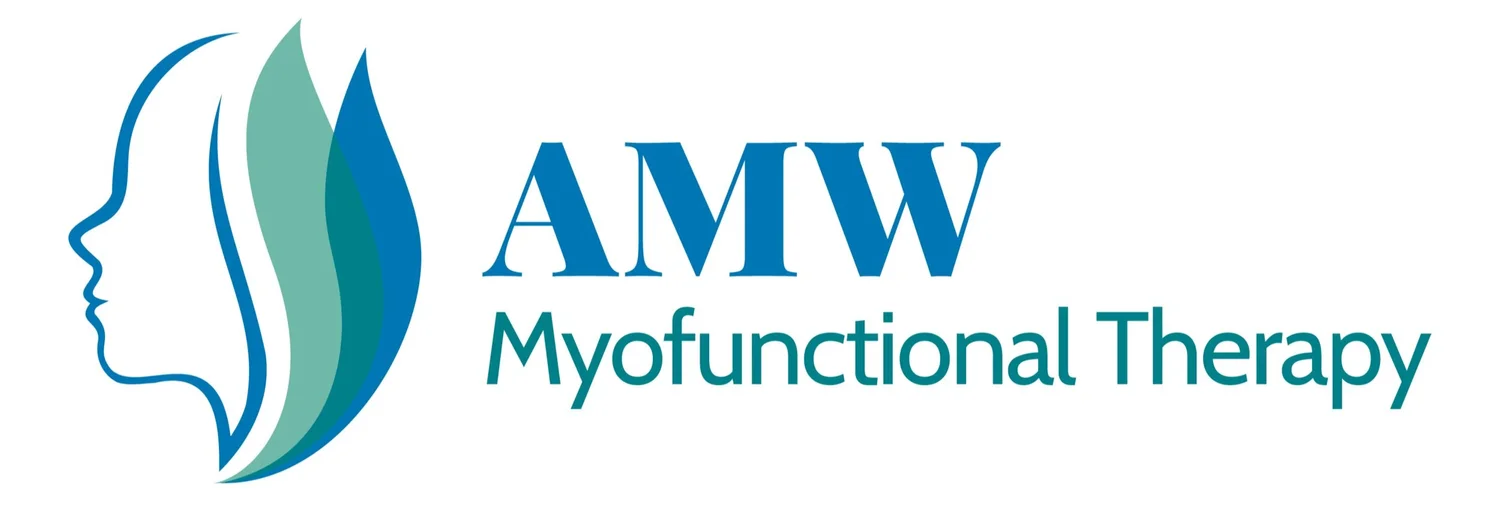
Orofacial Myofunctional Disorders
Orofacial Myofunctional Disorders (OMDs) are disorders of the muscles and function of the face and mouth. OMDs may affect directly and/or indirectly facial skeletal growth and development, oral hygiene, stability of orthodontic treatment, facial esthetics, forward head posture, breathing, chewing, swallowing, speech, occlusion, restricted facial and lingual frenum, incorrect oral habits and more.
Most OMDs originate with insufficient habitual nasal breathing or with oral breathing.
Correct swallowing depends on proper relationship between muscles of the face, mouth and throat. The act of swallowing is one function that depends on the body’s vital balance To swallow properly, muscles and nerves in the tongue, cheeks and throat must work together in harmony. When a person swallows normally, the tip of the tongue presses firmly against the roof of the mouth or hard palate, located slightly behind the front teeth. The tongue acts in concert with all the other muscles involved in swallowing. The hard palate, meanwhile, absorbs the force created by the tongue
Because a person swallows 500-1000 times a day, improper swallowing can cause a variety of problems. However, it is actually the resting position of the tongue that does most damage as it is more constant.
Sleep Disordered Breathing and Mild to Moderate OSA
Recent research has shown that myofunctional therapy may reduce the symptoms of sleep-disordered breathing (such as snoring) and improve mild to moderate OSA (obstructive sleep apnea). When functioning and used properly, the muscles of the tongue, throat, and face can reduce obstruction to the airway.
Scientists and doctors have realized that not only is sleep apnea far more widespread than we ever knew, but the health concerns around it are more alarming than we imagined. Sleep apnea in children is becoming far more common and it has been linked to a number of conditions including ADD, reduced IQ, and developmental issues.
Dental problems related to an OMD
When a person swallows incorrectly, the tip and/or sides of the tongue press against or spread between the teeth. This is commonly called a tongue thrust. Constant pressure from resting or incorrectly thrusting the tongue away from the hard palate may push teeth out of place.
This can also cause orthodontic relapse in adult patients. If the function of the tongue thrust is not corrected prior to removal of orthodontic appliances the open bite will reappear over time until tongue positioning is optimal.
An OMD may lead to an abnormal bite- the improper alignment between the upper and lower teeth known as malocclusion. This problem may lead to difficulties in biting, chewing, swallowing.
The constant pressure of the tongue against or between the teeth will not allow the teeth to bite together. This is known as an open bite
An improper alignment or malocclusion between the upper and lower teeth can lead to difficulties in biting and chewing food
An incorrect swallow will purse and tighten the muscles of the cheeks, chin, and lips, causing a facial grimace
Tongue Tie
Tongue-tie is a real medical condition where the tongue is tightly tethered to the floor of the mouth and it can have substantial effect on oral development. This piece of tissue under the tongue is called a frenum and present on everyone, on some it is tighter then it should be.
For more reading information on tongue-ties please visit the Breathe Institute. If you believe you may have the signs and symptoms of being tongue-tied, please don’t hesitate to reach out.
Mouth breathing
Can’t get enough air through the nose? Luckily we have our mouth to fall back on; however, this can become poor life-long habit if not corrected.
Mouth breathing or constantly open lips is a cause and/or signal of tongue thrust and low tongue rest posture
Mouth breathing can affect our body by changing how our tongue works and where it rests within the mouth, along with changing the shape of your face and altering your appearance. This is especially happening with children who are still growing. Mouth breathing also influences a multitude of other areas in our body.
The face can have a dull sluggish appearance when the muscles are not in proper balance
In children, mouth breathing has been linked to poor growth and weak academic performance, as well as ADD, and ADHD symptoms.
In adults, poor oxygen concentration in the bloodstream has been associated with high blood pressure, heart problems, sleep apnea, and other medical issues.
Illustrations courtesy of Swallow Productions, Linda Miller, RDH; Wichita, Kansas; 1986
Speech Problems that may develop from an OMD
A person with abnormal oral muscle patterns may suffer from a lisp or have difficulty in articulating sounds. If muscles in the tongue and lips are incorrectly postured, this can prevent a person from forming sounds of normal speech.
Multi-Disciplinary Approach
A properly trained myofunctional therapist is one member of the team that will successfully treat an OMD. Other allied professionals such as dentists, orthodontists, speech therapists, and osteopaths can ensure that the patient’s needs are addressed and handled appropriately. We feel that the patient needs to be evaluated from a variety of approaches in order to be successful in treatment.
Myofunctional Red Flags
Spend some time reviewing the red flags inspired by Sharon Moore from her book Sleep Wrecked Kids. Answering any with a “yes or unsure” is a potential sign that more questions need to be asked.
How does the face look at rest?
Puffy eyes?
Dark circles?
Dry lips?
Lips apart?
Red and/or irritated border around the lips?
A short upper lip that barely moves?
Does the lower lip dominate or sit out from the upper lip?
Runny nose?
Does the tongue sit low and forward, or is it ever visible between the lips?
Tendency to drool?
Wrinkled chin?
How do things sound?
Is there often a coughing and/or throat-clearing habit?
Is there audible breathing?
Breathless with moderate activity?
What about function?
Tongue visible while talking?
Tongue out a lot while doing activities or concentrating?
Forward head posture?
Slumped posture?
Breath(es) through your/their mouth?
Chews food fast?
Messy eater?
Takes big bites?
Chews with an open mouth?
Have food left over in the mouth after swallowing?
Loud chewing?
Avoids eating chewy/crunchy food?
Audible swallow?
Makes a facial grimace or tightens their/you lip/chin muscles while swallowing?
Visually can see the tongue when chewing or during a swallow?
*Moore, Sharon. Sleep Wrecked Kids: Helping Parents Raise Happy, Healthy Kids, One Sleep at a Time. Morgan James Publishing, 2020
Connect With Us
If you wish for us to reach out and connect or schedule an appointment please complete the form below.
Thank you for your interest in AMW Myofunctional Therapy.
*Please note that if you’re under 18 years of age, you’ will need to have your parent(s) or legal guardian contact us.
AMW Myofunctional Therapy is NOT in contract with any insurance providers.
HSA and FSA payments are approved.










